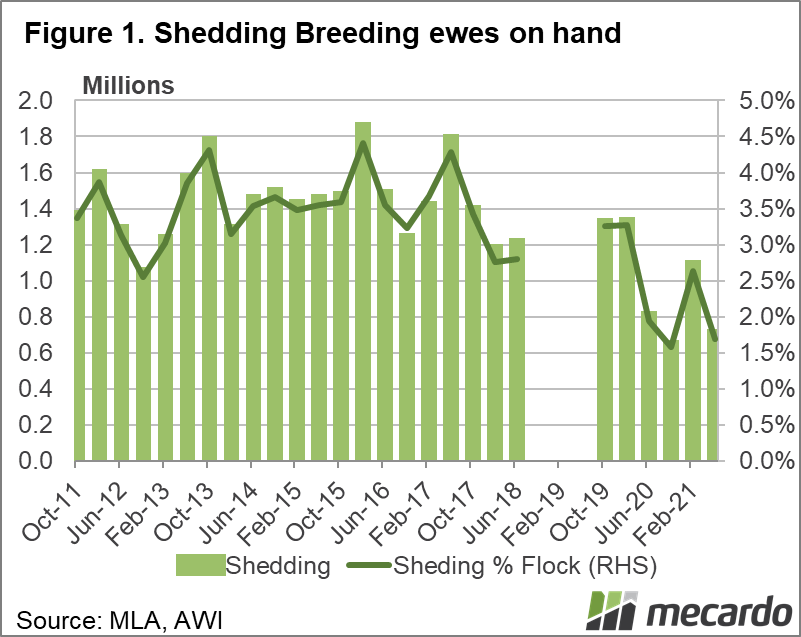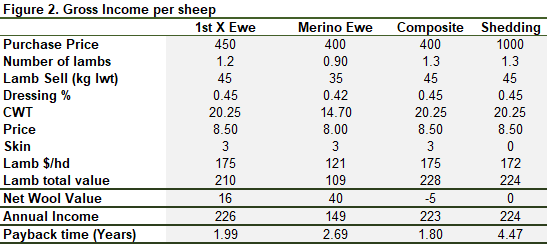The flock rebuild is well and truly underway, with breeding ewe prices hitting new extremes this spring. While conventional breeding ewes, Merinos and First Cross are making record prices, for them, it is shedding sheep which are achieving extremes. Today we look at whether they are worth the extra $500 per head.
Record breeding ewe values have been achieved by Australian Whites, with 10 scanned in lamb ewe lambs making $1351 per head last week. Over the last couple of months, Aussie White ewes and ewe lambs have been selling for $1000 per head, albeit in small lots.
Merino and first cross breeding ewes are also making record money, and if Aussie Whites weren’t making so much the $500 per head prices would look extreme.
We don’t have figures on Australian White numbers specifically, but the AWI/MLA Wool and Sheepmeat survey does collect figures on the number of shedding sheep in the flocks. Figure 1 shows the numbers of shedding sheep have been declining.
The survey figures suggest that in June shedding sheep ewe numbers were down 12% on the same time last year, and 40% in three years (Figure 1). The numbers in the survey do bounce around, and given the small size of the flock, it can change dramatically depending on who fills out the survey. Regardless, it looks like the stronger Merino wool prices, and the drought of 2019-20 saw a decline in shedding sheep numbers.
The tighter numbers of shedding sheep partly help explain the high prices, but for commercial growers at least, they have to make sense economically.
Figure 2 shows some rough numbers on the payback time for buying different breeds of ewes on a commercial basis. Shedding sheep obviously have the advantage of being low maintenance, in terms of no shearing or crutching costs. Whether the lower maintenance costs are worth an extra 2.5 years to pay off is up to the buyer.
There are no doubt plenty of shedding sheep being purchased are going to be used to breed more shedding sheep, but paying the premium suggests that the premium will be sustained in future years. If ewe lambs can be sold for $1,000 per head next year, the money is obviously worth paying, however, traditionally shedding sheep have been priced at similar levels to first cross ewes.
What does it mean?
With strong lamb and mutton demand, and subsequent prices, buying breeding ewes for lamb production still looks to be profitable over the medium term. Spending $1,000 on sheep for commercial production looks to be far riskier.
There is a school of thought that Covid has seen many small farms bought by tree changers, and shedding sheep are being bought to stock these farms. This makes some sense in explaining extreme prices for small lots of low maintenance sheep, but makes for plenty of anguish when one gets its head caught in a fence and dies.
Have any questions or comments?
Key Points
- Breeding ewe prices have hit new records this spring, with Australian Whites the strongest.
- Shedding sheep numbers are well back on levels of three years ago.
- Buying shedding sheep doesn’t make sense for commercial production.
Click to expand
Click to expand
Data sources: MLA, AWI, Mecardo














